$15 Flat Rate Shipping Everyday. Your order ships FREE when you spend $150 or more!
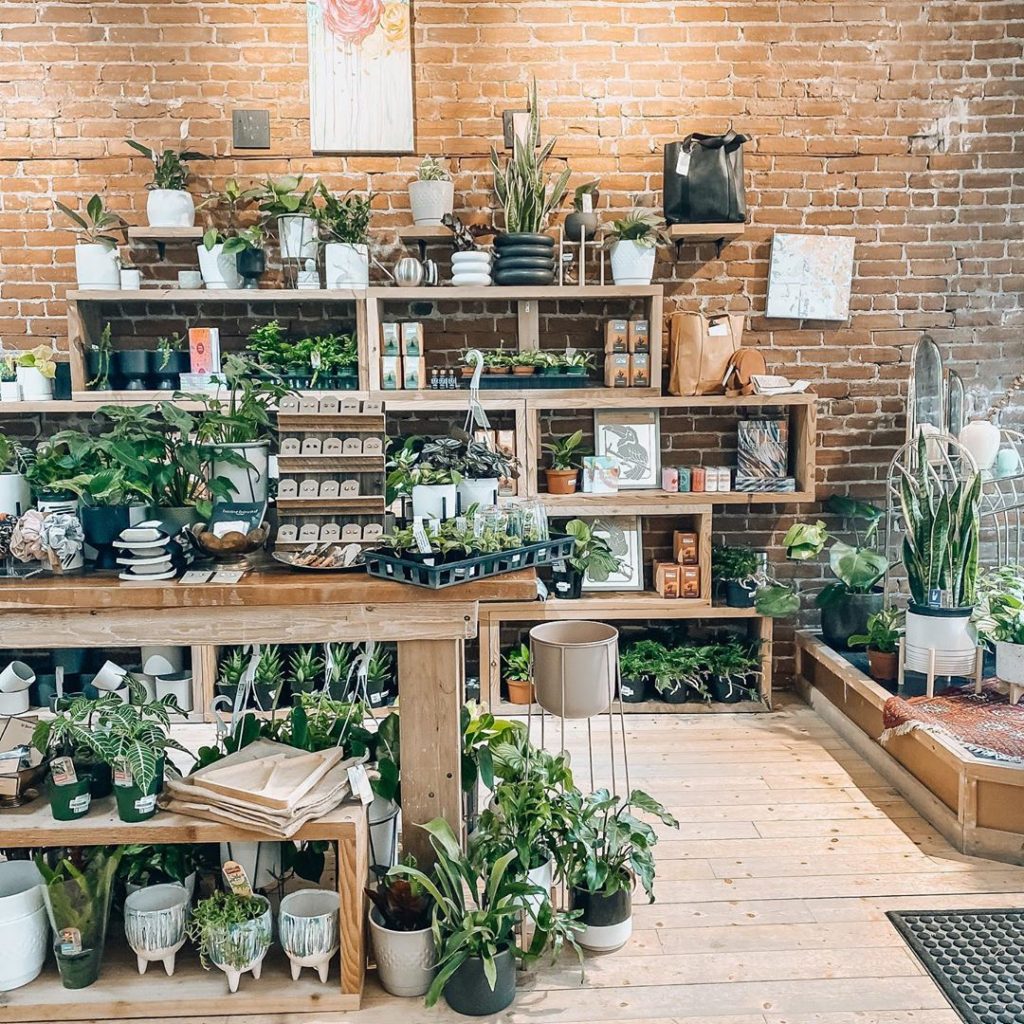
Go on, make a scene. We get it, we’re plant obsessed too.
We stock a range of common, and not-so-common houseplants, pots, and accessories. But, just like most good things, many of our plants are out the door to their new homes as quickly as they arrive, and certainly before they make it online.
When it comes to rare plants, we’re always working to bring in new and exciting varieties; some hard-to-find varieties we’ve recently had in stock include Calathea orbifolia, Ceropegia woodii (string of hearts), Hoya kerrii albomarginata (heart hoya), Peperomia prostrata (string of turtles), Scindapsus pictus (satin pothos), and Zamioculas zamiifolia (ZZ) raven and zenzi. If you’re looking for something specific, let’s chat!
For plant updates and announcements,
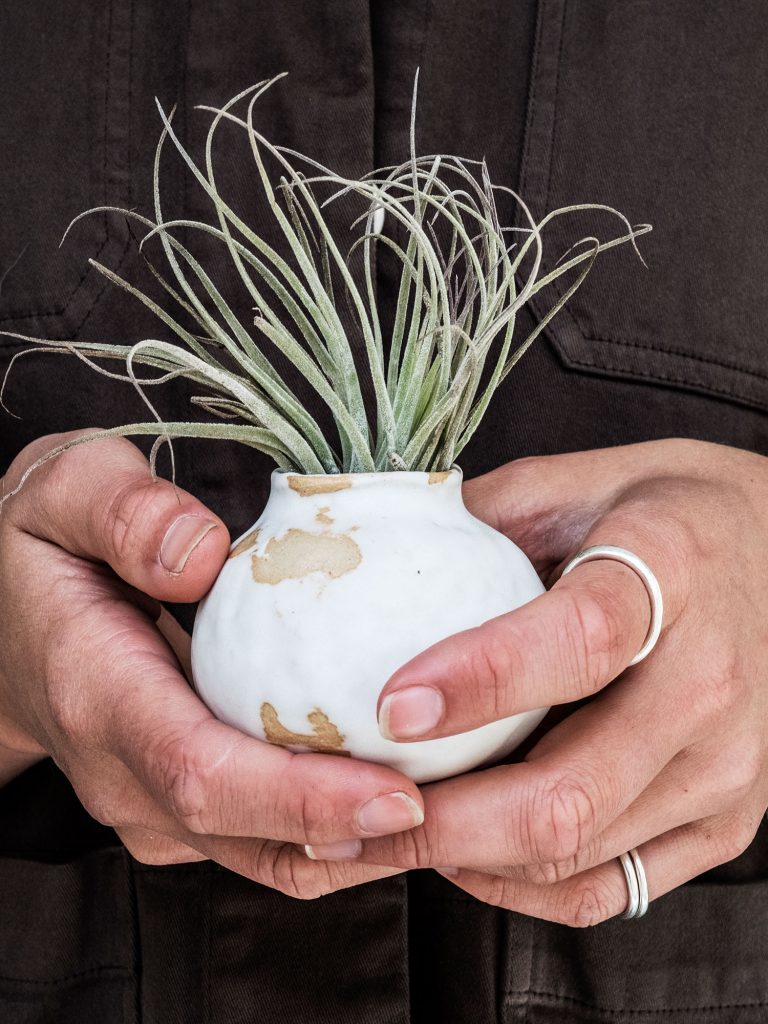
There are over 600 known varieties of Air Plants, officially named Tillandsias. These unique, low-maintenance houseplants that naturally call tropical climates home and, while beginner-friendly, can be tricky too.
Tillandsias are epiphytes organisms, which means that in nature, air plants grow on other plants—clinging to tree trunks, for example—rather than by rooting in the ground. Air plants prefer to grow on bushes, rocks, and shrubs.
Perfect companions for your home, work, or school air plants require very little upkeep and can brighten any setting regardless of the season. Air plants need bright lights with an occasional bit of direct sun exposure. If the plant is in a glass terrarium, direct sunlight should be avoided as it amplifies the sun’s rays. Watering should be done in accordance with the weather. Mist and soak more often if it is hot and dry and less often when it is cold, dark, or damp.
Larger varieties of air plants like to be soaked, and smaller varieties do wonderfully with just a good thorough misting. Ensure you allow them to dry out completely before placing them back into their home to avoid plant-killing mold. Air plants do not want to be placed in any soil; they love good air circulation around their base/bulb.
Cacti and succulents are low maintenance plant friends who enjoy lapping up the sunshine on your window sills and shelves. The majority of cacti are desert-dwelling and can survive extended periods without rainfall. Cacti instead draw their moisture from dew or mist and store nutrients and moisture in their tissues. When it comes to succulent plants, they tend to have leaves or stems filled with juices, the accumulated water, and nutrients that will allow the plant to grow.
Most succulents and cacti require a lot of light. You will want to regularly turn your plants to ensure all sides of the plant get equal sunny exposure to maintain their shape. During their periods of active growth, you should feed them a specialized cactus fertilizer once every three weeks or so. You only need to re-pot desert cacti when the roots fill the pot.
When in doubt, the best rule to follow when it comes to taking care of your cacti is to make sure the soil in your pot is dry between waterings. This will stop the plant’s roots and lower edges from becoming waterlogged or rotting, which leaves you with a soggy, slimy mess.
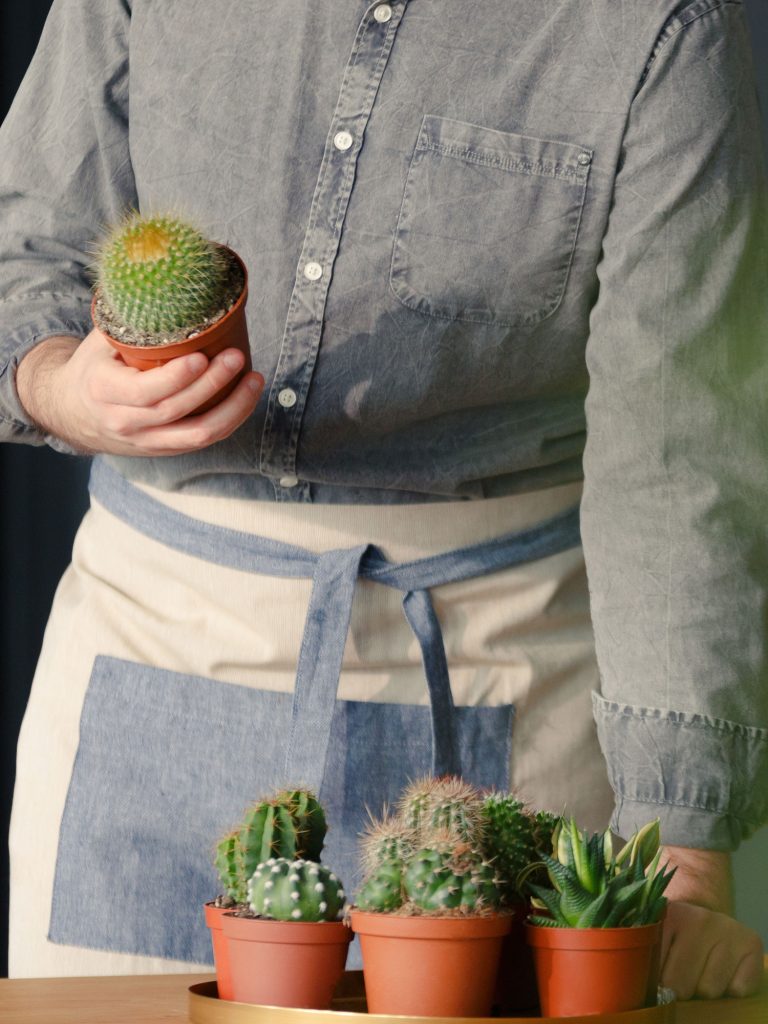
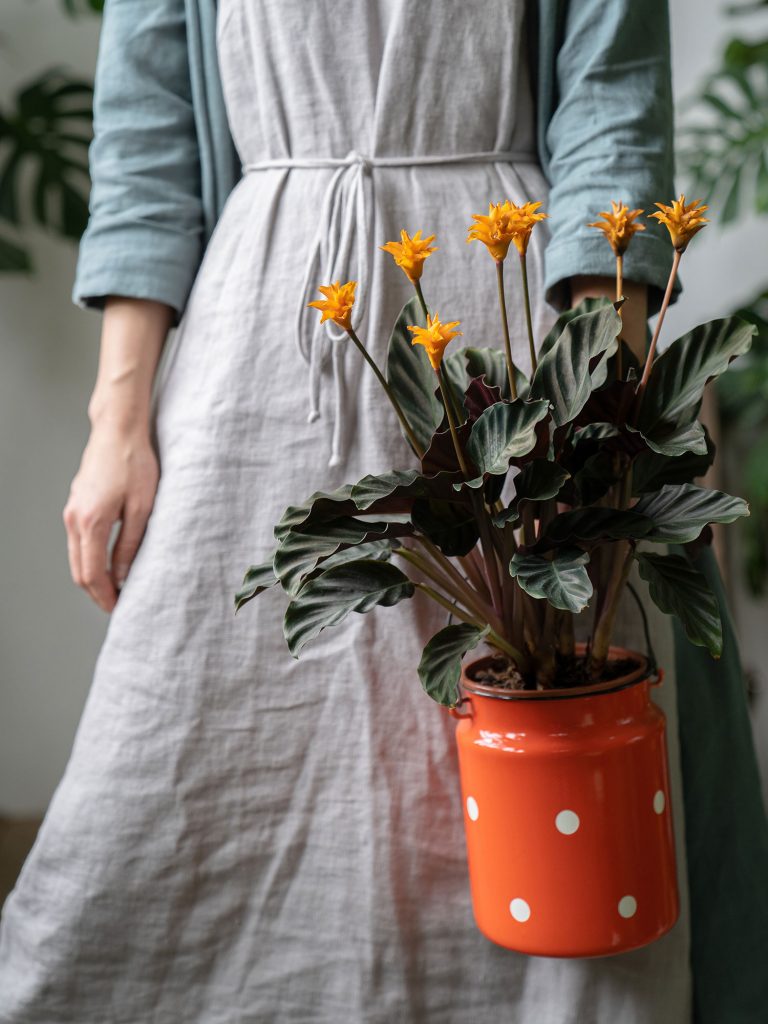
Calathea plants, better known as prayer plants, tend to have the reputation of being the drama queens of the beginner house plant category. Those new to prayer plants and humidity-loving Calatheas often finds the additional effort needed to care for them is rewarded with some of the most highly-decorated foliage found in nature. From varieties with dark green velvety leaves to leaves with geometric patterns and maroon undersides, prayer plants make up a vast family, with a dizzying amount of varieties for houseplant hobbyists.
Many prayer plants require much lower light than other popular houseplants. Prayer plants open and close their leaves, depending on the time of day and the available light. Their foliage is gorgeous on both sides of the leaves, bringing a different ~vibe~ at different times of the day.
Calathea plants do poorly in direct sun, which will bleach the leaves. Place your prayer plant in a part of a room that receives low to bright indirect light. As a rule, the darker the foliage, the lower the light requirements. Prayer plants enjoy a humid environment than Kamloops generally offers, so increasing the humidity levels by using a humidifier or placing their pot over a tray filled with pebbles and water will make everyone happy. Don’t be afraid to cut the dead/bleached leaves off to the stem’s bottom—this encourages healthier growth to appear.
Calathea enjoy moist soil—but not wet soil. Calathea also dislike being dried out. We weren’t kidding about them being #dramaqueens. Every few days, stick a finger in the soil to assess if the dirt/medium feels dry. If it does, water generously, making sure that excess water has been drained.
Ferns are a tropical plant suited to cooler parts of the house but won’t survive in rooms that are too well heated. All ferns love moisture and thrive in humid conditions. Your ferns will love being misted with room temperature water regularly and being positioned next to your humidifier.
Most ferns are forest or woodland plants and have delicate roots adapted to the light forest soil rich in leaf mold and decayed vegetable matter. At home, you can fluff up your soil with peat or a fibrous peat substitute with plenty of sand. Fertilize Feed your ferns over the summertime every two to four weeks with a liquid fertilizer. With just a few drops of fertilizer, you can add it to the water for occasionally misting.
Although ferns grow in moist and shady places like forest floors, it does not mean that they need no light. In the wild, light is dappled, and if the light level in your home is too low, you will only see poor growth and yellowing fronds. Position your ferns near a window that gets morning or late afternoon sun, and keep the ferns away from strong sunlight, especially during a Kamloops summer.
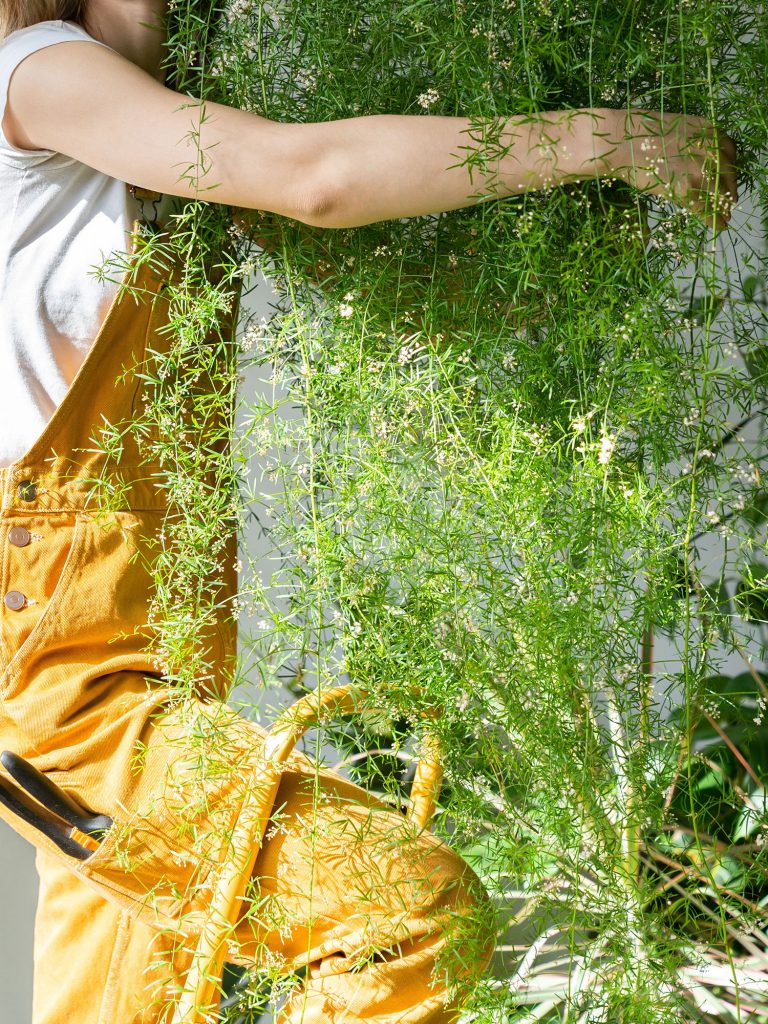
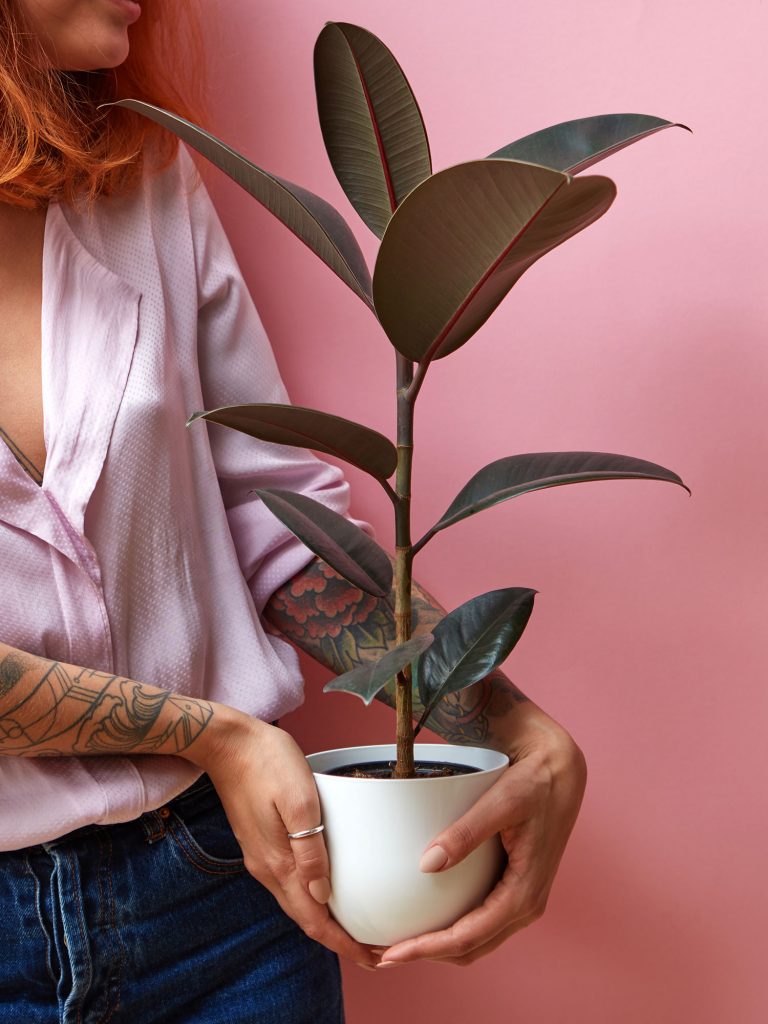
Ficus trees can maintain their shape regardless of their size, making them ideal for bonsais or massive houseplants in large spaces (up to 15ft!). Their leaves can be either dark green or variegated, and some have pliable trunks braided or twisted into different forms. While the most popular ficus is the Fiddle fig, other common ones are the creeping fig and rubber plant.
It is essential to maintain relatively high humidity around your plant. Regular light misting or setting the plant on a pebble tray filled with water is a great way to increase their humidity, but keep in mind that your ficus won’t like overly wet roots or “wet feet.” Water the ficus evenly throughout the summer and reduce watering in the winter. The most important tip we can give is not to let the root ball dry out and check the soil before watering.
Ficus plants need bright light, but only acclimated plants can handle the direct sun. They appreciate being moved outside in summer but do not place them in direct sunlight and don’t leave them outside all day in the dry Kamloops heat. Like any indoor house plant, you need to ease it into life outside.
As they have large flat leaves, ficus leaves need to be wiped down regularly. Wet your cloth with either tap or distilled water. Gently wipe the leaves of your ficus individually by holding the leaf from underneath while you wipe them, so they do not tear or rip off. If the insecticidal soap does not work, try using neem oil or other essential oils to deter or kill the bugs. In the case of severe infestation, it may be best to throw away your plant.
There are over 200 unique species of Hoyas, each of which has a distinct combination of colors and shapes. A hoya plant needs soil that is rich in minerals and drains well. Hoya plants are technically vines, and can be trained to grow along any path you choose. Hoya plants are one of the easiest houseplants you can care for. With a bit of practice, you can have a gorgeous Hoya vine wrapped around your living room in no time.
Sunlight is essential for a Hoya plant, but indirect sunlight is best. Haanging your plant directly in your window will cause the leaves to burn from the sun’s direct heat. With your hoya plant, you will want to use liquid fertilizer to feed them about once a month during the growing season, and once cold weather comes along, cut back on the fertilizer as they enter a semi-dormant state.
During the spring and summer, hoya craves water, and they will need a good amount of it to remain hydrated. Simply water the plant thoroughly, and as long as the pot that it is planted in is a container that drains well, you shouldn’t need to water it again for about two weeks. Over the winter months, you can cut back on watering the plant to once a month.
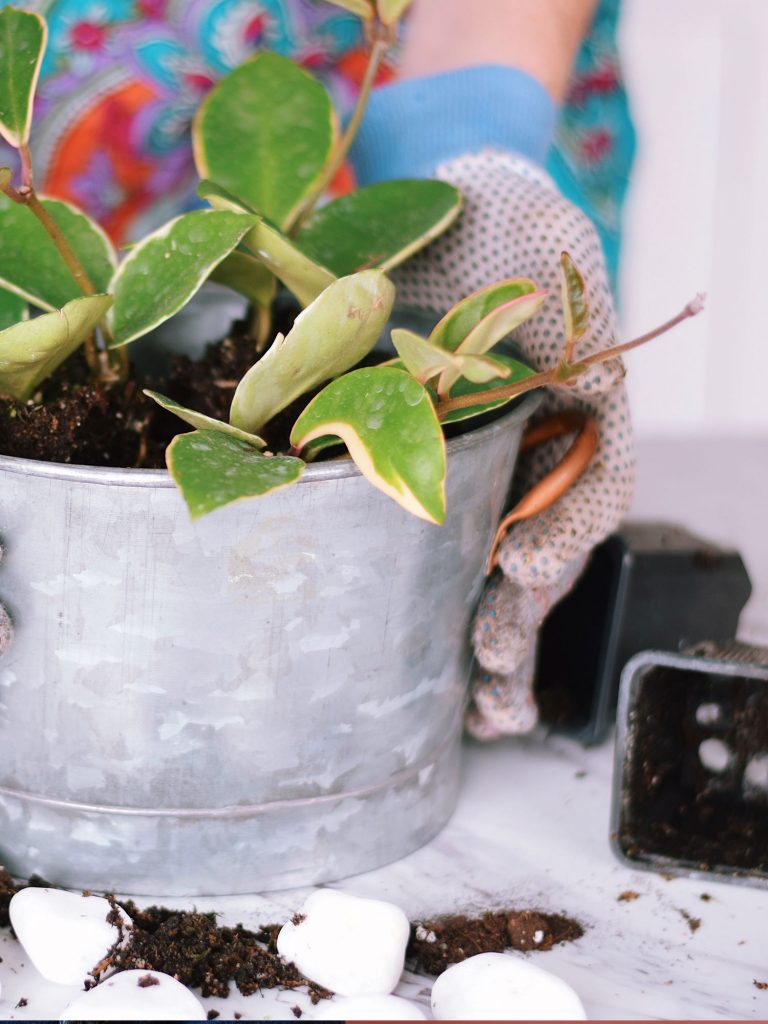
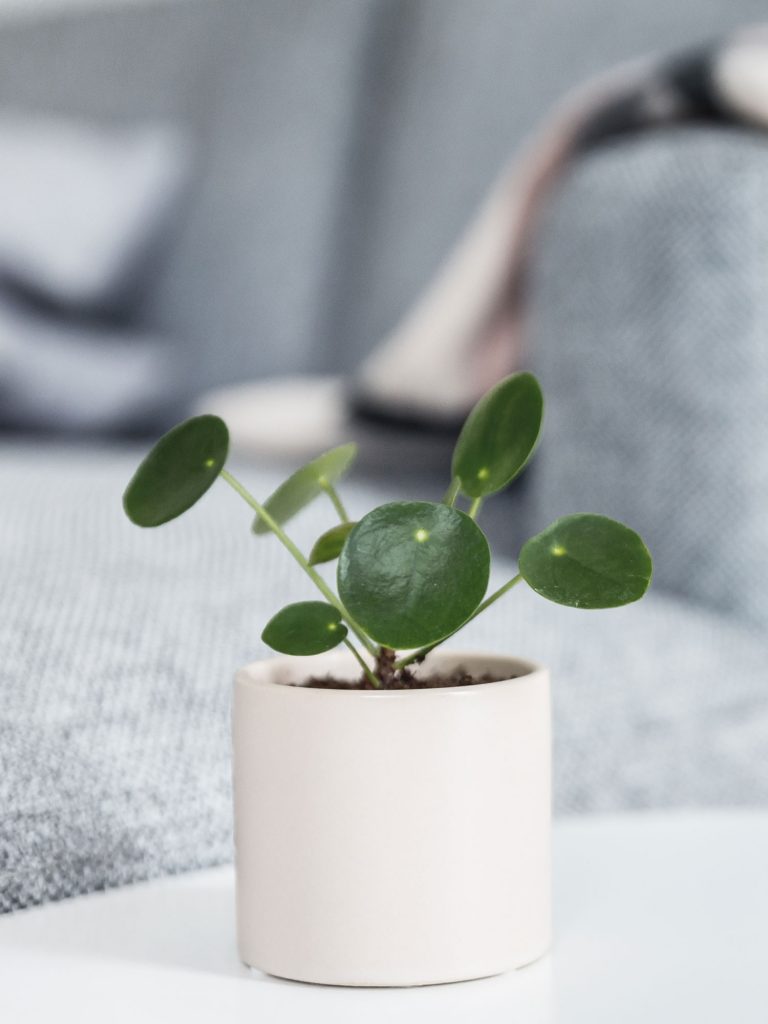
The Pilea or as it’s scientificcaly knowen, Pilea peperomioides, goes by many other names. Also called the Chinese money plant, UFO plant and friendship plant it is a visually interesting plant that is easily distinguished by its disc like leavess.
In terms of light, the best location for your pilea is bright light, with no direct sunlight that can scorch the leaves. That said, a pilea DOES like lots of sun – just not too much direct one sun.
Pilea need a well-draining potting soil, and a pot with drainage holes. The soil needs to fully dry out between waterings, with more watering required in the warmer, hotter weather of a Kamloops summer. If the leaves start to look sad and droopy, that’s a sign that the plant needs water. As they tend to grow towards the light, we have found that rotating the plant once a week prevents it from getting lop sided. We also like to wipe down its leaves every few weeks because those round discs can collect dust.
While its scientific name is peperomia, you may be familiar with its many varieties, including watermelon peperomia, baby rubber plants, radiator plants, rainbow peperomia Peperomia Jayde. In fact, there are actually more than 1,000 types of peperomias that exist. Varieties range from those with heart-shaped leaves to watermelon-striped leaves adorned with silver stripes to even dwarfed varieties that reach about half the standard’s size.
Locate your peperomias in a medium to low light situation away from direct sun. Avoid putting them in extremely sunny areas or too dark spots. These plants even do well under your fluorescent lights, making them ideal for the office and many different areas. Peperomia generally has a small root system making them ideal for dish gardens and other stylish indoor pots. Mixing fine gravel into the soil helps these plant’s roots get the air it needs to thrive.
Your peperomia will do best when it is watered from its roots. Your plant’s soil should be dry before you water the plant again. To make your peperomia happy, let it sit in a pan of water for a few minutes every seven to 10 days. It is essential, especially during the winter, to not get the crown of your plant wet. Every so often (once or twice a year), give it one good watering from the top, preferably under running water to help remove salts that the plant builds up.
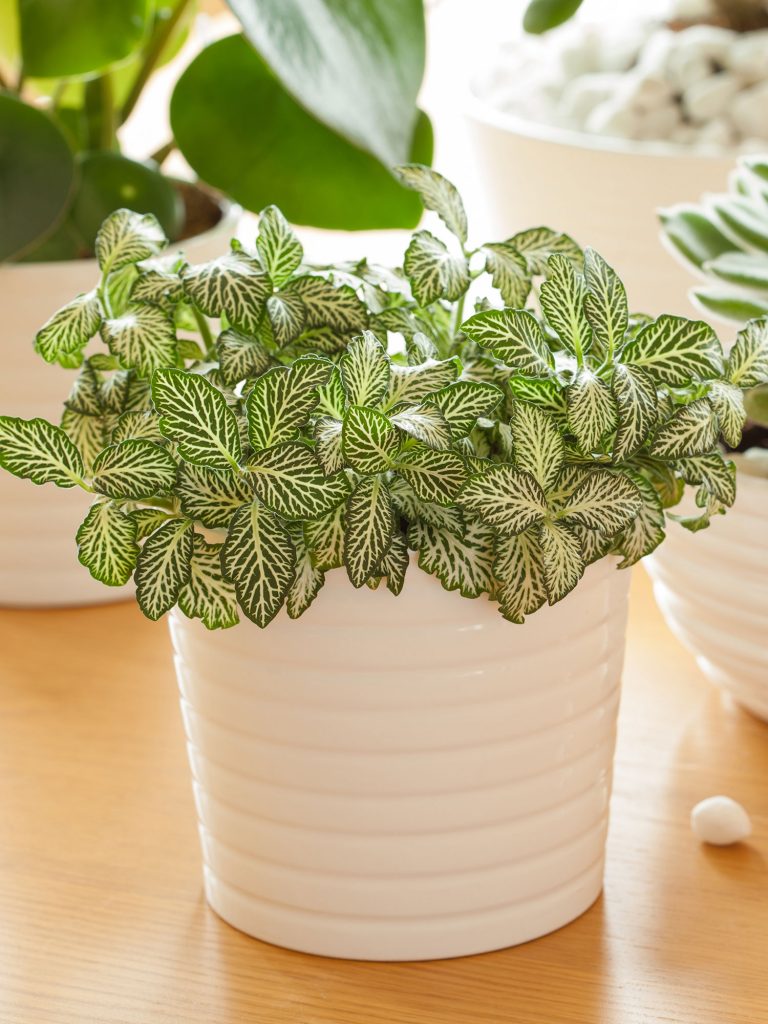
Tag us @farandwideshop! We love to see you how you use, style & repurpose our products, and we might feature you!
Monday to Friday 10 – 5:30
Saturday + Sunday 10 – 4
| Cookie | Duration | Description |
|---|---|---|
| cookielawinfo-checkbox-analytics | 11 months | This cookie is set by GDPR Cookie Consent plugin. The cookie is used to store the user consent for the cookies in the category "Analytics". |
| cookielawinfo-checkbox-functional | 11 months | The cookie is set by GDPR cookie consent to record the user consent for the cookies in the category "Functional". |
| cookielawinfo-checkbox-necessary | 11 months | This cookie is set by GDPR Cookie Consent plugin. The cookies is used to store the user consent for the cookies in the category "Necessary". |
| cookielawinfo-checkbox-others | 11 months | This cookie is set by GDPR Cookie Consent plugin. The cookie is used to store the user consent for the cookies in the category "Other. |
| cookielawinfo-checkbox-performance | 11 months | This cookie is set by GDPR Cookie Consent plugin. The cookie is used to store the user consent for the cookies in the category "Performance". |
| viewed_cookie_policy | 11 months | The cookie is set by the GDPR Cookie Consent plugin and is used to store whether or not user has consented to the use of cookies. It does not store any personal data. |